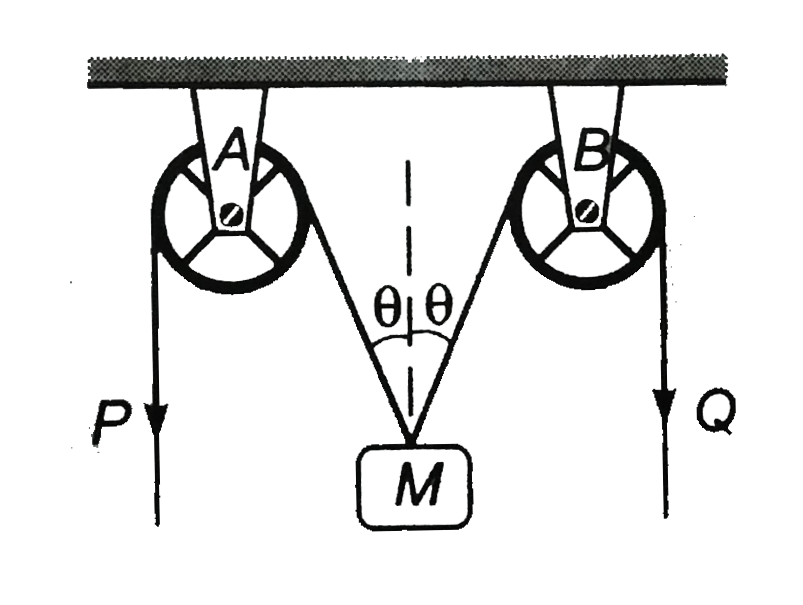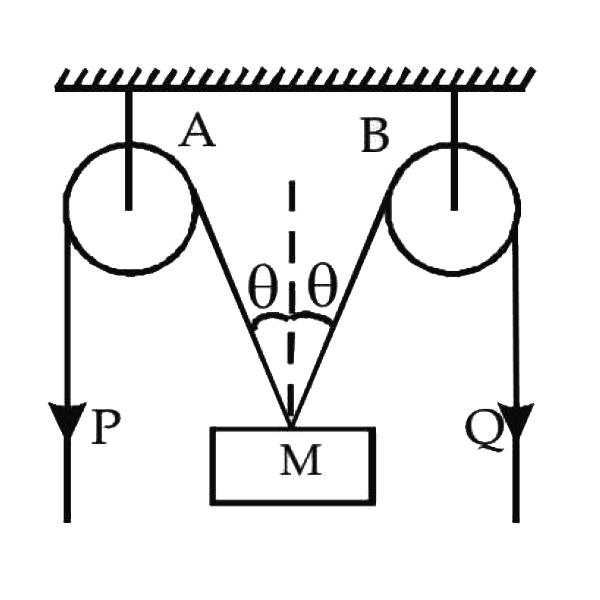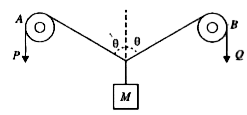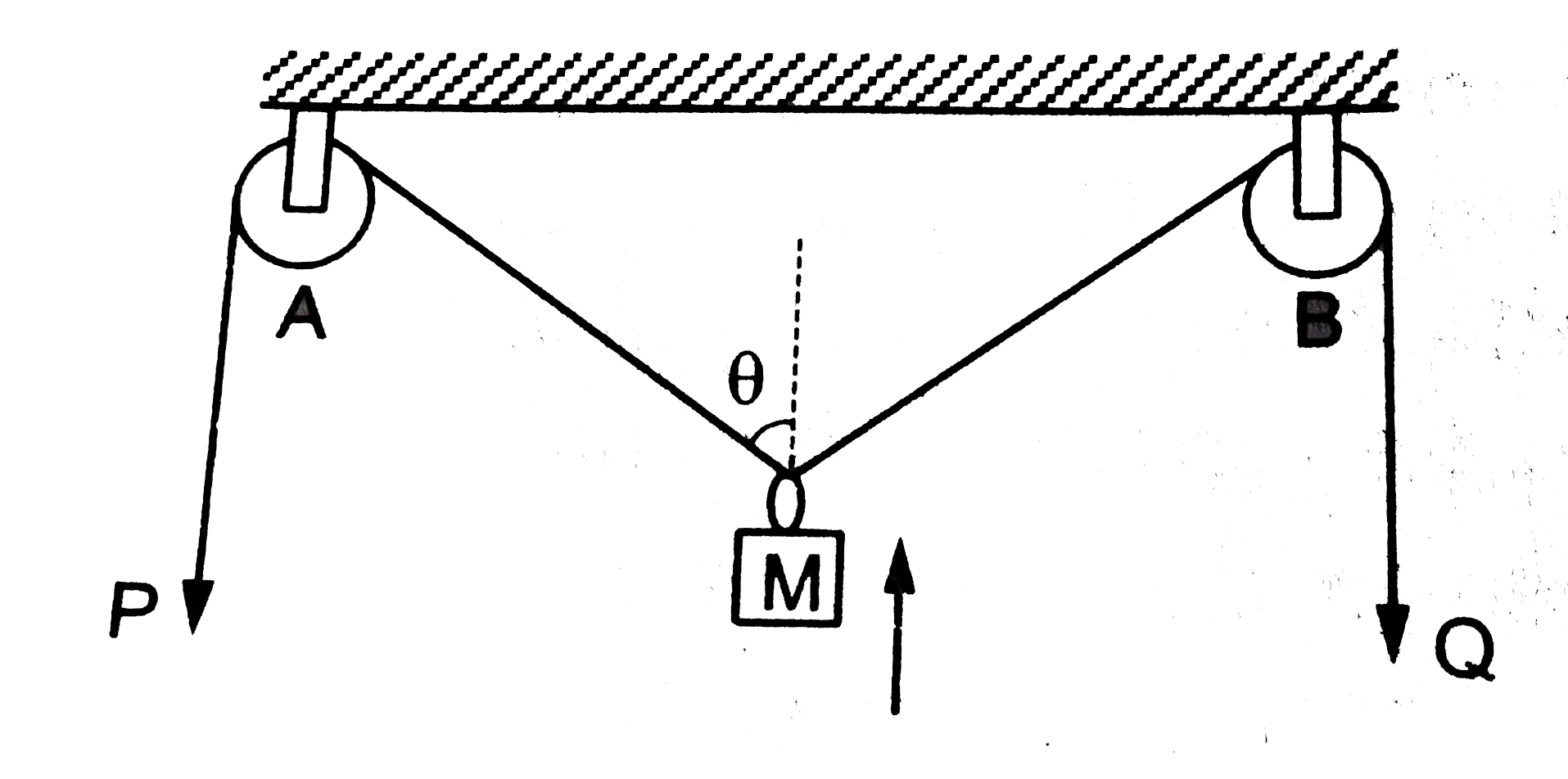In the arrangement shown in figure, the ends P and Q of an unstretchable string move downwards with uniform speed U. Pulleys A and B are fixed. Mass M moves upwards with a speed

(a) 2Ucosθ (b) Ucosθ (c) 2Ucosθ (d) Ucosθ
Vcosθ
V/cosθ
2Vcosθ
2/Vcosθ
The correct Answer is:B
Ucosθ=V
∴U=vcosθ
Topper's Solved these Questions
- BOOK - ALLENCHAPTER - NEWTONS LAWS OF MOTIONEXERCISE - EXERCISE-III28videos
NEWTONS LAWS OF MOTION
- BOOK - ALLENCHAPTER - NEWTONS LAWS OF MOTIONEXERCISE - EXERCISE-I52videos
NEWTONS LAWS OF MOTION
- BOOK - ALLENCHAPTER - NEWTON'S LAWS OF MOTION & FRICTIONEXERCISE - EXERCISE (JA)4videos
NEWTON'S LAWS OF MOTION & FRICTION
- BOOK - ALLENCHAPTER - RACEEXERCISE - Basic Maths (Wave Motion & Dopplers Effect) (Stationary waves & doppler effect, beats)24videos
RACE
Similar Questions
In the arrangement shown in the Fig, the ends P and Q of an unstretchable string move downwards with uniform speed U. Pulleys A and B are fixed.
Mass M moves upwards with a speed
 View Solution
View SolutionIn the arrangement shown in figure, the ends P and Q of an unstretchable string move downwards with uniform speed U. Pulleys A and B are fixed. Mass M moves upwards with a speed

(a) 2Ucosθ (b) Ucosθ (c) 2Ucosθ (d) UcosθView Solution
Knowledge Check
- Question 1 - Select One
In the arrangement shown in Fig. 15.3.15 the ends P and Q of an unstretchable string move downwards with uniform speed U. Pulleys A nd B are fixed. Mass M moves upwards with a speed.
 A2 U cosθBU cosθC2 U/cosθDU/cosθ
A2 U cosθBU cosθC2 U/cosθDU/cosθ
In the arrangement shown in figure the ends P and Q of an inextensible string move downwards with uniform speed u. Pulleys A and B are fixed. The mass M moves upwards with a speed
 View Solution
View Solution∫dθ(sinθ−2cosθ)(2sinθ+cosθ)
View Solution∫d(cosθ)√1−cos2θ
View Solutionlf cos5θ−acos5θ+bcos3θ+ccosθ then c is equal to-
View SolutionThe value of cos4θ+sin4θ−6cos2θ is (a) cos2θ (b) sin2θ (c) cos4θ (d) none of these
View Solutionifacosθ+bsinθ=c. then what is the value of asinθ−bcosθ
View SolutionEvaluate: ∫cos2θln(cosθ+sinθcosθ−sinθ)dθ
View Solution

